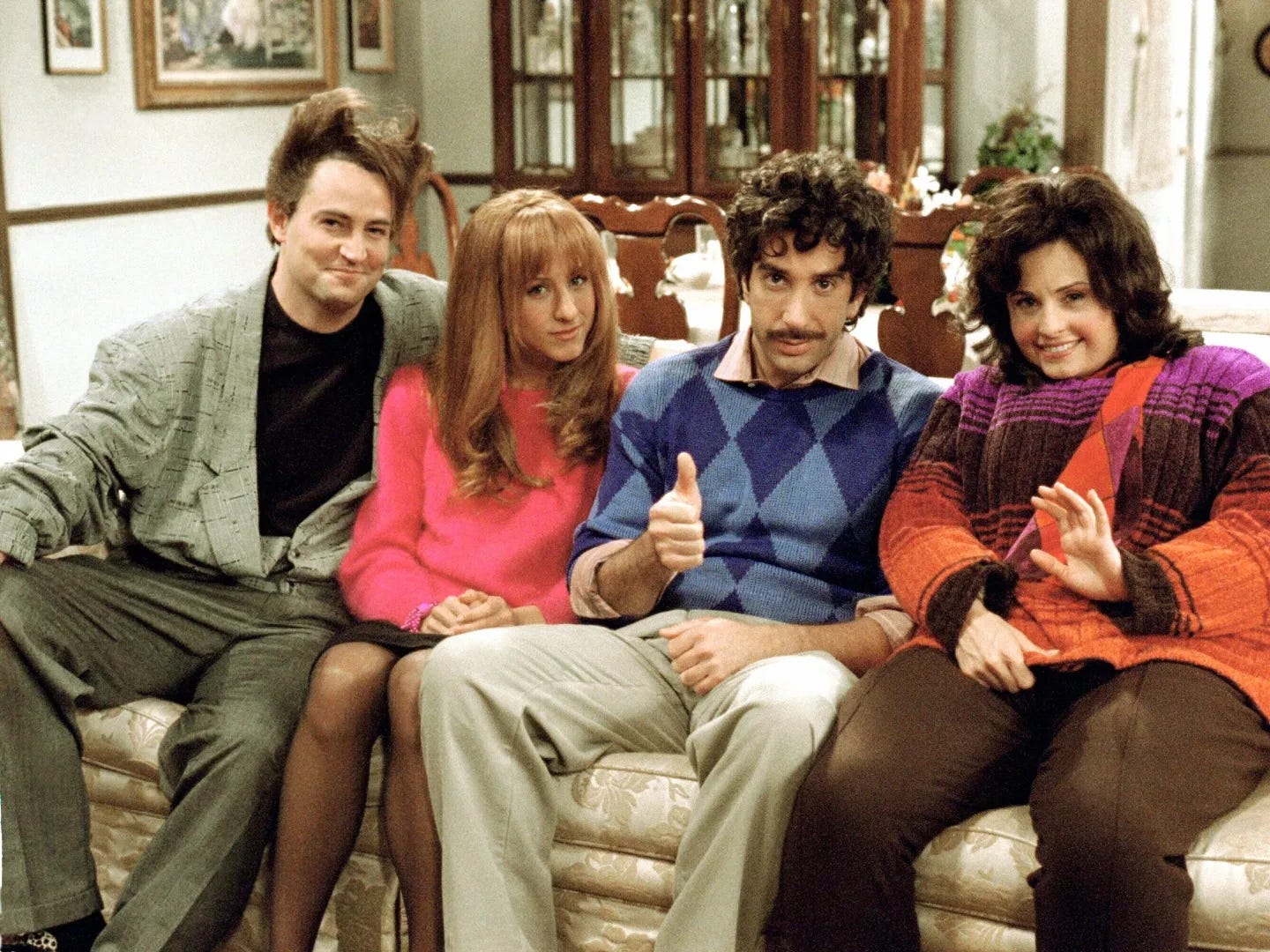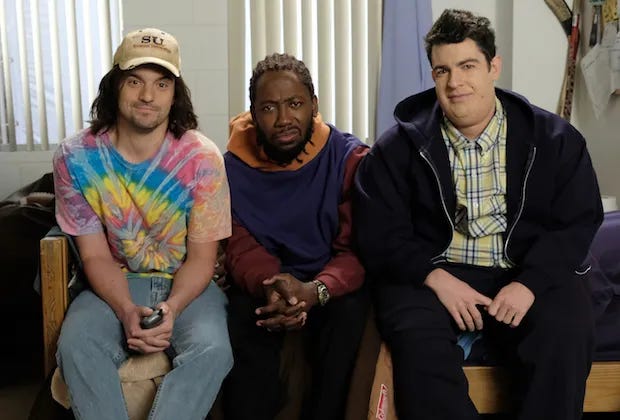Could They BE Any More Offensive?
The unheralded healing process of micro-dosing questionable TV
Listen, I’m not ashamed to admit that I started watching episodes of (the quintessentially 90’s problematic) Friends last summer, after we were evicted for the second time in two years. The looming packing and moving and worrying triggered a self-preservation mechanism buried deep in my wheelhouse: when in doubt, zone out and watch some super-silly TV.
The first two seasons of Friends got us through that move, and the ensuing unpacking and settling in. Find a natural rhythm in new surroundings. Ok, things are feeling safe now. Exhale. Watch another episode. Laugh un-self-consciously at a few scenes. Feel like a 13-year old again, except that now you understand more of the jokes and why many of them felt so very wrong. Racial tokenism. Disability-based “humour.” Relentless gay jokes. Monica’s fat suit flashbacks: need I say more?

Watching Friends as a self-aware and mindful 40-something in 2024 got old fast; back to Twin Peaks (a bona fide television triumph with an objectively painful-nay-impossible-to-watch midsection of its 2nd season - yellowface? Seriously?) Newer movies and series (Poker Face is bald-faced kindhearted throwback fun; Yellowjackets might just be the campiest offering of recent streaming-era series that I’ve seen - and yet, I’ve watched every episode) offer fresh, only marginally guilty pleasure.
But then: having an especially stressful day? Throw on an episode of (the more modern and progressive than Friends) New Girl, which I discovered in my post-partem days. It’s funny! It’s sometimes heartwarming! Lamorne Morris is on fire! Aaaaand another character, Schmidt, constantly suffers from fat-suit flashbacks. Foiled again.
Being aware of the faults and potential harm within the art you love is part of the process of loving it.
I know, I know: don’t look for evolved viewpoints or timelessly compassionate content in Network sitcoms. There is an infinite pool of independently-produced media from which to pull comfort and inspiration in our most vulnerable moments. Nothing is lazier than simply watching whatever is popular; I just so happen to have developed a soft spot for a lot of these glossy network series at such a young age and noticed such pleasing results (read: nervous system quick fixes) that I still give them a bit of my precious time. Cultural appropriation side-by-side with celebratory inclusivity… the sitcom landscape is a confusing, frustrating, hypnotic and beautiful place not unlike reality.
I suppose that, while I’ve long felt like an outlier, I’ve always loved to study the mainstream. I did it with Top 40 music and blockbuster movies and best-selling books when I was younger; for some reason, I’ve had a lot of catching up to do on mainstream TV as a grown-up. I still gravitate towards art made by my friends and acquaintances and other like-minded, DIY creative minds. The same 13-year old that stayed up until 1:00am watching bizarre old B-movies on a rabbit-eared television is also the 21-year old who loved easy, breezy, whitewashed Gilmore Girls and the 26-year old who rented hundreds of movies exclusively from the “Independent” and “International” sections of the uptown independent video store. They’re all the same woman who makes her own music videos and songs and stories, and watches her son’s silly cartoons and tries to steer him towards the most inclusive and constructively subversive animated shows she can find.
They’re all me. I’m always evolving and actively trying to improve myself and live as radically as I can, harming no one in the process. I’m eternally learning and reassessing my tastes, vices and decisions when red flags are raised, such as in the media described above. Being aware of the faults and potential harm within the art you love is part of the process of loving it.
25 years after a famously campy Season Two back in 1991, Twin Peaks: The Return went ahead and became a much classier, more fleshed-out and realized cinematic execution of a grand visual storytelling vision for original television that tests the patience and psychological fortitude of its viewers.
That’s kind of my entire personal raison d'être here on Planet Earth: to push boundaries and make art for my personal betterment and hopefully, for the greater good of anyone who discovers it. Eternally flawed are we all, but it’s never too late to try harder and do better.
Check out these stunning works by (or concerning) some of my favourite artists if you’re craving beautiful scenes, grand ideas or fresh perspectives:
Black Cherokee - A novel by Antonio Michael Downing
Yoko - A biography by David Sheff


